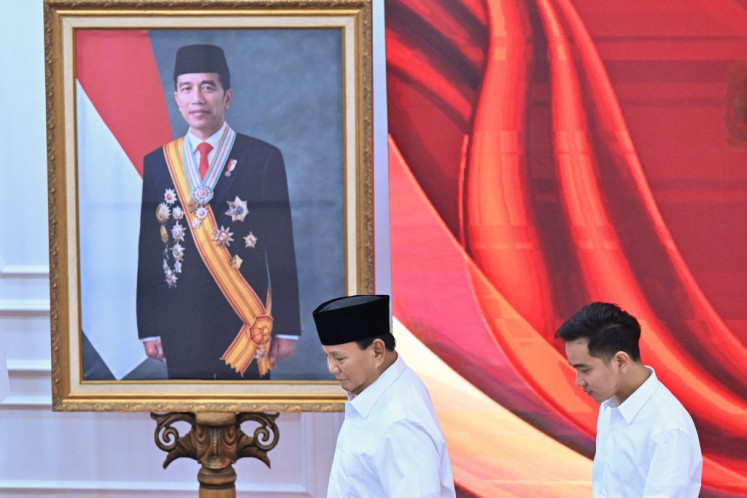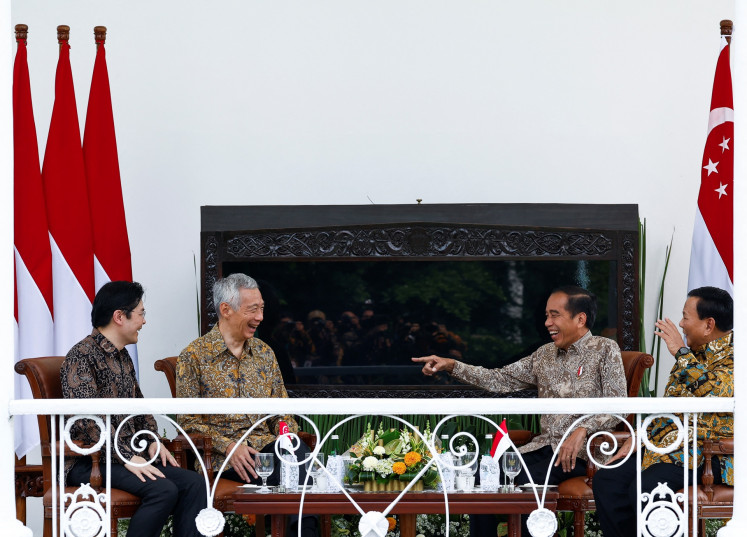State banks cautious on loan growth target
The country’s four state-owned banks are taking a cautious approach this year as they set similar loan growth targets to 2018 because of fears of global economic slowdown and tightening domestic liquidity this year
Change Size

T
span>The country’s four state-owned banks are taking a cautious approach this year as they set similar loan growth targets to 2018 because of fears of global economic slowdown and tightening domestic liquidity this year.
The four lenders under the Association of State-Owned Banks (Himbara) expect loan growth will hover between 11 and 15 percent this year.
Himbara chairman Maryono said recently that the global economy would continue to stagnate because of the possibility of the United States Federal Reserve raising its benchmark rate at least two times this year.
Last year, the Fed increased its funds rate four times because of the optimism regarding US economic growth. The aggressive move prompted capital funds to return to developed countries after flooding emerging markets, including Indonesia, a few years prior.
The capital reversal caused the heavy depreciation of the rupiah and other emerging market currencies against the US dollar. It also led Bank Indonesia to gradually increase its benchmark rate to 6 percent after holding it at 4.25 percent for eight months from September 2017.
As US economic growth is expected to slow slightly this year, the Fed has taken a dovish stance on further rate hikes.
However, commodity prices are expected to be more volatile this year, which would be a factor in any global economic slowdown, said Maryono.
“Global commodity prices are expected to fluctuate this year and may decline, which can result in lower export growth for Indonesia. At the same time, oil prices are expected to increase,” he told a meeting of the House of Representatives Commission XI recently.
Domestically, banks are preparing to face tightening liquidity as third-party funds have grown slower than lending in the past few years.
Data from the Deposit Insurance Corporation show that banks’ loan-to-deposit ratio stood at 92.59 percent in November, slightly lower than the 93 percent seen a month earlier.
The ratio exceeded the lower end of the safety limit set by the Financial Services Authority at 92 to 102 percent.
The situation prompted each of the four state banks to set either a lower or similar target range for their funding growth compared to lending.
Bank Mandiri, the country’s largest lender by assets, expects its third-party funds to grow 11 to 12 percent, while its loan growth target was set at 11 to 13 percent.
Indonesia’s most profitable lender Bank Rakyat Indonesia (BRI) set its target for third-party fund growth at 11 to 13 percent, lower than its loan growth target of 12 to 14 percent.
Bank Negara Indonesia (BNI), also one of the country’s five biggest lenders, targeted to grow third-party funds by 12 to 14 percent. The range was lower compared to its loan growth target of between 13 and 15 percent.
Bank Tabungan Negara, Indonesia’s biggest mortgage lender, projected that its third-party funds growth would hover between 12 and 15 percent, while its lending target is 12 and 15 percent growth.
To avoid a squeeze in liquidity, BNI president director Achmad Baiquni said his company was planning to issue bonds in rupiah denomination.
Rico Rizal Budidarmo, BNI’s treasury and international banking director, told Kontan recently that the bank was planning to issue negotiable certificates of deposit and bonds worth Rp 7 trillion (US$493.3 million) to Rp 8 trillion in the second quarter.
Meanwhile, BRI will continue to develop its digital banking platform to boost third-party funds, said president director Suprajarto. BRI has the biggest banking network in the country.
“Hopefully, this platform will support fundraising from the people who still put their money under their pillow,” he said, referring to the unbanked segment of the population in rural areas where bank branches and ATMs are absent.









